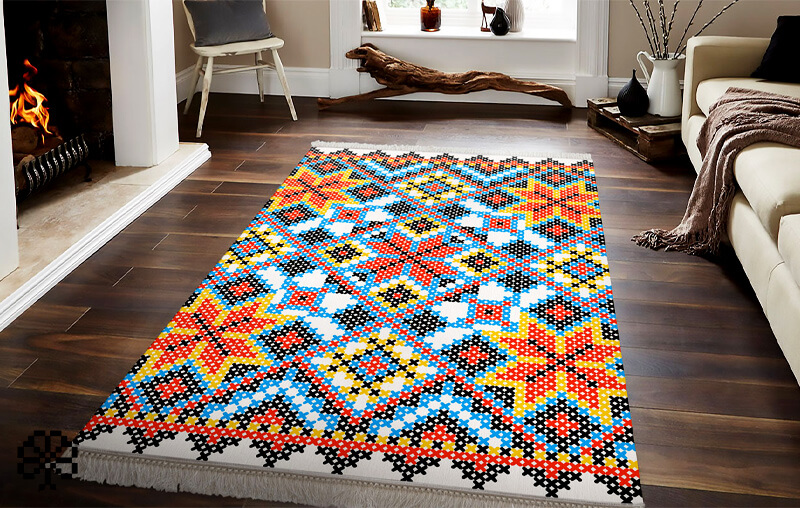
Thought and innovation
The journey of a Handmade carpet begins with an idea rather than a thread. The designers consider a concept and finalize the design for the subsequent carpet. They are free to change the design’s color in any way they want; it takes a certain amount of experience to comprehend how the color will reproduce with various yarns and lighting conditions. A carpet with the same design is produced in at least three different color variants. A pom serves as a reference point for each shade. The concepts are transformed by the artists into computer-aided drawing that requires hand precision from a hand-drawn sketch. On graph paper, it is drawn, with each square representing a knot. Paint is used to fill in the outline to show the shades of detail. The weaver is aided in determining the rug’s pattern and the appropriate color for each knot by the final sketch. The sketch is rarely used by an expert weaver. Designs that are printed are traced and marked down to the smallest detail. To convey the desired effect to a group of weavers, colors, ratios, knot count, and techniques are discussed. The designs are now ready to be woven.
Dyeing the yarn
The next step is to dye the yarn. To dye the yarn, you stretch it across poles that are laid on the edges of a large round vessel. Traditional dyeing involves repeatedly submerging the yarn in the dye to ensure uniformity of color. Hands use natural dyes, and our palette includes everything from deep, vivid, and luminous natural reds, yellows, blues, and browns to countless synthetic dye colors. The wheeling of the yarn into hot tubs is the next step up. Depending on the color, the type of dye, and the required darkness, the dye is heated to a temperature close to boiling for a predetermined amount of time. The electrical vat can be used to dye larger quantities in shorter amounts of time if there are a lot of yarns to dye. The yarns are dyed, then steamed, washed, and dried in the sun.
Hand Knotting
A fine hand-knotted carpet can take months to complete, depending on the size, design, and pattern of the carpet. A Hand-knotted Rug is made with the finest wool, silk, and cotton. After cutting the knot with a hooked knife, the weaver then ties the knot with his or her hands and uses a comb-like tool to keep the rows of knots together. On the rug’s back, the threads are also clipped evenly with scissors. One thousand knots per hour and one knot every two seconds are the capabilities of an experienced weaver. This speed increases gradually over time. Depending on the size of the carpet, a single person or a group of people can knot it on a vertical loom. A hand-knotted rug is constructed with a variety of knots. The region and how the custom was handed down through the generations determine the type of knot used. The Persian knot is used to weave rugs in most countries.
Final Finishing
The designs and patterns are trimmed with scissors after the finished carpet is removed from the loom. The dimensions, color, pile quality, and detail of the carpet are examined. Shearing is the process of cutting it to the desired size and polishing it. A machine controls this, which prepares the carpet for the more intricate finishing steps. Depending on the design, carpets can be finished in many different ways. Pattern boundaries are trimmed and cleared, and pile lines are manually sorted. Our sculpted carpet collection features embossing, which assists in lifting the pattern from the surface. Shearing areas of the rug’s pile to create a three-dimensional appearance is the process. Typically, sculpting emphasizes the rug’s design. This is a very difficult process that only highly skilled artisans can carry out. The result is a variety of finishes, including cut pile, loop pile, Saxony, and textured. The carpet gains distinction and depth from these. The final size of the carpet is determined by its surging. The final steps in making a Hands carpet are effectively marked by a craftsman looping the yarn around the edges.




